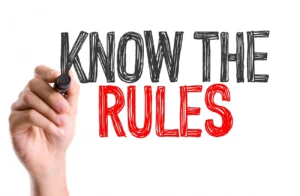 Part of an ongoing series of 5e (2014) Rules notes. See the end of the post for notes on 5.5e (2024) rules.
Part of an ongoing series of 5e (2014) Rules notes. See the end of the post for notes on 5.5e (2024) rules.
Part of the confusion is … they are sometimes interchangeable, mechanically. But let’s first talk about the differences.
Strength (Athletics)
Succeeding in difficult situations while climbing, jumping, swimming, or other physical exertions. E.g.,
- Climbing a cliff, or clinging to one while someone is trying to knock you off.
- Jumping a long distance, or pulling a stunt mid-jump.
- Struggling to swim or stay afloat in treacherous currents, or with something trying to interfere with you.
- Forcing your way through something in your way.
Dexterity (Acrobatics)
Staying on your feet in a tricky situation. E.g.,
- Running on a sheet of ice.
- Balancing on a tightrope.
- Staying upright on a rocking ship deck.
- Performing acrobatic stunts (dives, rolls, somersaults, flips, tumbles)
- Avoiding damage when falling. [Old school D&D, but not in 5e]
Using Athletics vs Acrobatics
In many way, you can narratively figure out which one makes sense, and different characters might use one or the other for the same action. Consider how Aragorn (an Athlete) would do something, vs. how Legolas (an Acrobat) would do it. A crowd of orcs to get past? Aragorn bulls his way through, while Legolas tumbles and leaps and dodges past, but the final effect is the same.
In a couple of cases in the rules there are explicit options as to which you can use.
Grappling: The Grappler rolls an Athletics check vs. the Grapplee rolling either with either Athletics (think “breaking free”) or Acrobatics (“slippling free”). If the Grapple succeeds, the Grapplee can repeat the contest as their action on their turn.
Shoving: Same as Grappling, only with a push-back or push-down as the result.
At the same time, the two skills are also quite different, something blurred by the Real Life fact that most Acrobats are also Athletes, and many Athletes have Acrobatic skills. People often think of Gymnastics as acrobatic (rolls and tumbles, and amazing acts on the balance beam). But those activities are also highly athletic. As has been commented, “Raw athleticism lets them climb things and jump through the air. It’s being acrobatic that allows them to do it gracefully or maintain their balance.” Or, as another person put it, “Athletics is when you’re going up, and Acrobatics is when you’re coming down.” The gymnast’s leap from the balance beam is clearly Strength (Athletics), but sticking the landing is Dexterity (Acrobatics).
Or if gymnastics isn’t your thing, consider a parkour routine; there are clearly both STR and DEX things going on there. (And CON, and INT, if not WIS, for that matter.)
To complicate things further, Abilities and Skills are not fixed in their combination. One can imagine a Strength (Acrobatics) roll being legitimately allowed, or a Dexterity (Athletics). Indeed, there is technically in 5e no such thing as a Skill check; everything is an Ability check, potentially modified by proficiency in a given Skill set.)
No huge conclusions here, just an observation about similarities and differences and what the fundamentals of two ambiguously-named skill sets are. Again, using the guidelines described above as guard rails, narratively figure out what it is that you’re doing. And, of course, note that both of these skills are good candidates for an occasional invocation of the “Rule of Cool.”
A House Rule
As noted above, in previous editions of D&D, Acrobatics could help save you from a fall by reducing its damage. That was explicitly left out of 5e, so I’m reluctant to re-insert it.
I would house-rule, though, that a successful Dexterity (Acrobatics) role might keep you from going prone after a fall, vs a DC equal to the damage you took (stick the landing!).
Bonus OneD&D Note:
 (Not so fast! Things changed after that first play test. See below.)
(Not so fast! Things changed after that first play test. See below.)
According to the Character Generation playtest document, Grappling and Shoving are now part of the Unarmed Strike action — hit the target with an Unarmed Strike (D20 + STR mod + Proficiency) vs their AC.
If you were going for a Grapple, the target becomes Grappled, with a STR or DEX check each turn vs a DC of (8 + STR Mod + Proficiency) to break free.If you were going for a Shove, you succeed.
This reduces the number of contests, but also reduces the use of Athletics and Acrobatics.
So, any changes in 5.5e?
 A bit. 5.5e (2024) now defines Athletics as a pertaining to checks to
A bit. 5.5e (2024) now defines Athletics as a pertaining to checks to
Jump farther than normal, stay afloat in rough water, or break something.
Acrobatics is defined as the skill to
Stay on your feet in a tricky situation, or perform an acrobatic stunt.
Also, in keeping with some of the initial playtest documents, these two skills have been made less essential, as part of 5.5e (2024)’s dislike of skill contests.
The most fundamental change is that Athletics (and sometimes Acrobatics) no longer play a role in Grappling and Shoving. Which seems a bit weird, to be honest.
Both of those are considered part of the Unarmed Strikes category of attacks. The initial “to hit” is an Unarmed Strike against their AC. Then, to judge what the “damage” (effect) is, rather than doing an Athletics vs. Athletics/Acrobatics contest as 5e did, the target must make a
STRength or DEXterity Save (their choice)
vs.
DC = (8 + shover’s STRength mod + shover’s Proficiency Bonus)
If the target fails, then on a Grapple they are grappled, and on a Shove they are shoved back five feet or knocked Prone.
There is still no canonical use of either skill to mitigate Falling damage or its resulting Prone status, but you can use either as a Reaction, against a DC 15, to land head or feet first in liquid (like water) and take only half damage.
As in 5e, when taking a Long Jump, a DC 10 Acrobatics roll is needed if you land in Difficult Terrain and want to avoid going Prone.

One thought on “D&D 5e/5.5e Rules – Athletics and Acrobatics!”